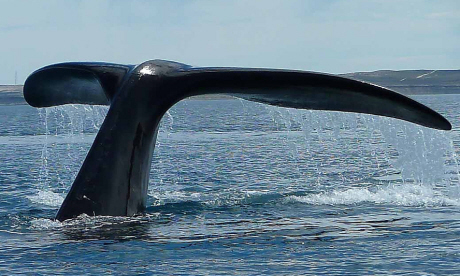
South Africa's big six?
Wildlife writer, photographer and broadcaster Mark Carwardine asks whether it's time South Africa's whales joined the BIG list
Roads. The mere thought of spending a holiday on one would fill most people with horror. You wouldn’t choose to spend a fortnight parked on the M25, a week counting cones on the M6 or a weekend break navigating Spaghetti Junction, would you?
But I’ve made a point of visiting one particular road at least once every year since the early 1990s. It’s in South Africa and should be on everyone’s list of ultimate destinations. Known as the Cape Whale Route, it’s a meandering scenic road that makes most other picturesque roads seem positively wearisome.
Hugging the South African coastline, from the Atlantic to the Indian Ocean, it starts north of Cape Town, skirts along the back of Table Mountain, ambles around the Cape of Good Hope and then twists and turns its way to the southernmost tip of the continent and far beyond.
It is the kind of road that makes you stop every few miles to gasp, or to contemplate the meaning of life. But the dazzling scenery is merely a bonus, because this is a road for whale watchers. There are official whale-viewing sites dotted every few kilometres along its length, where you can pull up and watch whales in the same way that, in lesser parts of the world, you can stop and buy hamburgers.
I’ll never forget the first time I stopped at one of these whale-viewing sites, complete with sign showing a picture of a whale spouting. I scanned the vast expanse of False Bay through my binoculars: a pied crow, a white-breasted cormorant, some gulls, a distant fishing boat, a couple of rocks and a piece of floating seaweed. But no whales.
I wasn’t surprised. After all, it did seem a little unlikely that there would be a real whale at the appointed place – ready and waiting the moment I happened to pull off the road. In Florida, you don’t expect to see an alligator lying next to a sign that says ‘Gators Crossing’; and, in England, the signs showing a deer ballet dancing generally guarantee that you won’t see a deer, let alone one doing a
grand jeté.
But then, out of the corner of my eye, I glimpsed a movement in the water and swung around just in time to see one of the rocks disappear below the surface. As I watched, the other rock grew wider, and longer, and suddenly sprouted an enormous head. It breathed a V-shaped blow high into the air, rolled briefly to one side, and dropped from sight.
A few moments later, the two whales surfaced and blew in unison. It was a mother and her calf. The mother was enormous. She must have been nearly 15m long and so wide that the visible portion of her smooth, jet-black body was virtually round. She resembled a half-submerged hot-air balloon.
They were southern right whales, which receive top billing on the Whale Route, and enter bays and inlets along the South African coast every southern winter. They begin to arrive in June, to mate and calve, and most of them leave some time in November or early December.
As well as southern right whales, over the years I’ve seen humpback and Bryde’s whales and several different dolphins along the Whale Route. And I’ve been introduced to everything from rock art and archaeological sites to penguin colonies and shark dives.
There are whale museums, guided walks and even, in the town of Hermanus, a real-life whale crier – whose job is to alert anyone within earshot to the most recent whale sightings.
These days dozens of coastal towns and villages are participating in this highly imaginative scheme. All that’s left now, according to one enthusiastic local, is to add the southern right whale to Africa’s famous Big Five. After all, it is several times heavier than the elephant, rhino, buffalo, lion and leopard combined.
